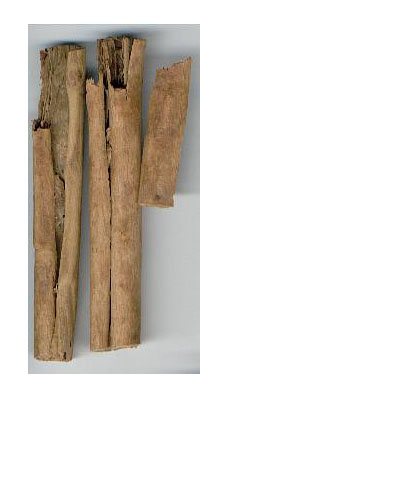Dalchini
Latin: Cinnamomum Zeylanicum Blume
Therapeutic Action:
Indian: dal-chini, darchini, dhall cheene Plant family Lauraceae (laurel family). Therapeutic properties The therapeutic properties of cinnamon oil are analgesic, antiseptic, antibiotic, antispasmodic, aphrodisiac, astringent, cardiac, carminative, emmenagogue, insecticide, stimulant, stomachic, tonic and vermifuge. Uses Cinnamon oil can be used for infection of the respiratory tract, rheumatism, arthritis and general pains. It calms an exhausted feeling of depression, tones the whole body and stimulates the glandular system, thus easing period pains. Summary Cinnamon oil's benefit lies in its toning and calming effect on the respiratory tract, the nervous system, and in the easing of colds and influenza, as well as period pains. It also calms the digestive system and helps with rheumatism and arthritis. Although traditionally used for clearing warts, it is not recommended to be used in skin care products. · Burners and vaporizers o In vapor therapy, cinnamon oil can be used in acute bronchitis and colds, as well as sneezing and to help lift depression and a feeling of weakness. · Blended oil or in the bath o Cinnamon oil can be used in blended massage oil, or diluted in the bath, to assist with bronchitis, diarrhea, chills, infections, flu, rheumatism and arthritis. Due to its very powerful antiseptic properties it is good for fighting any infectious diseases. It furthermore has great value in calming spasms of the digestive tract, nausea and vomiting. It stimulates secretion of digestive juices, while easing muscular and joint pains associated with rheumatism and arthritis. Care should however be taken not to irritate the skin and mucus membranes. · In a cream or lotion o As with the above, cinnamon oil can help with digestion, rheumatism and arthritic pain. It helps to fight colds and flu when used in the formulation of a cream or lotion.
References:
- Nadkarni, Vol I, Pages 328- 330
- Duke's, Page 127
- Leung & Foster P167-169
- Paranjape P. 264- 265
Used in:
- Violax Tablets
- Entrox Syrup / Unexotone Syrup

Copyright 2013 Unexo Laboratories Pvt. Ltd. All Rights Reserved. Designed & Developed By: Credence Technologies


